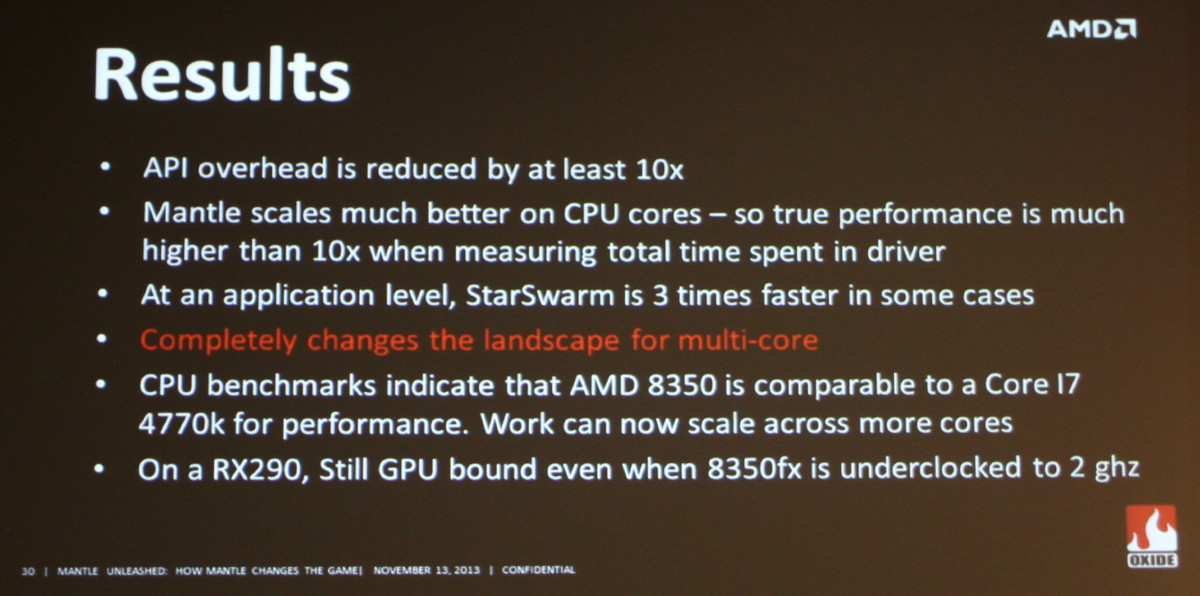So I suppose what we really need to see is a demonstration of a "pure" bindless game engine (not just a renderer demo) along the lines of Oxide's demo, to quantify its value when used as part of existing APIs.
It occurred to me that their dismissiveness with respect to bindless might be a direct result of these developers' experience with previous and current gen consoles. If they've used APIs that offered a pseudo-bindless abstraction (in which they had full control over what's in memory, but not how that memory is bound and the kinds of shaders that can bind to them, or how much can be bound to specific shaders), they might have a jaundiced view of bindless. Maybe it didn't give them the freedom we now take for granted in the term "bindless".
Maybe NVidia is hard at work on converting a game engine to a pure bindless model...
On the other hand, Mantle seems to be much more than just getting more performance. It strikes me as a thin compute-centric API that happens to respect the foibles and desires of fixed-function hardware in current GPUs, for graphics rendering.

